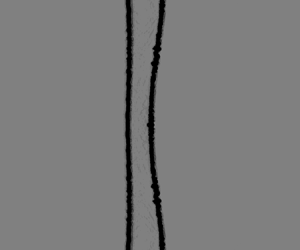No CrossRef data available.
Article contents
Freeze-out of perturbation growth for shocked heavy fluid layers by eliminating reverberating waves
Published online by Cambridge University Press: 13 May 2024
Abstract

The shock wave accelerating a heavy fluid layer can induce reverberating waves that continuously interact with the first and second interfaces. In order to manipulate the perturbation growths at fluid-layer interfaces, we present a theoretical framework to eliminate the reverberating waves. A model is established to predict the individual freeze-out (i.e. stagnation of perturbation growth) for the first and second interfaces under specific flow conditions determined based on the shock dynamics theory. The theoretical model quantifies the controllable parameters required for freeze-out, including the initial amplitudes of the first and second interfaces, the interface coupling strength and the maximum initial layer thickness preventing the second interface's phase reversal. The effectiveness of the model in predicting individual freeze-out for the first and second interfaces is validated numerically over a wide range of initial conditions. The upper and lower limits of initial amplitudes for the freeze-out of the whole fluid-layer width growth are further predicted. Within this amplitude range, a slightly higher initial amplitude for the second interface is specified, effectively arresting the growth of the entire fluid-layer width before the phase reversal of the second interface.
JFM classification
- Type
- JFM Papers
- Information
- Copyright
- © The Author(s), 2024. Published by Cambridge University Press





